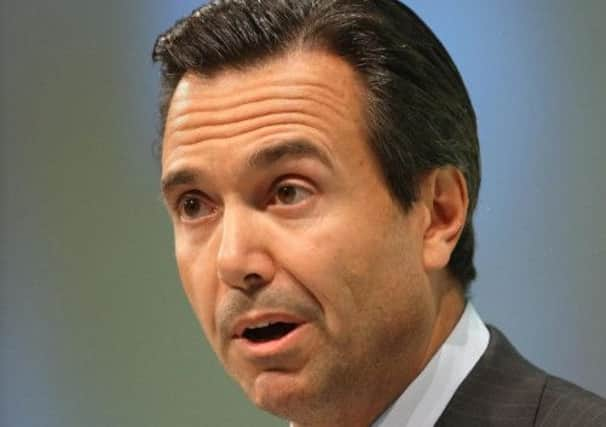Lloyds to take £330m hit on insurance sale


The lender has agreed to sell Heidelberger Leben to UK-based buyout group Cinven and German insurer Hannover Re, which have formed a joint venture company to snap up life insurance portfolios in Germany.
While the sale for £250m will see Lloyds take a hefty loss on its accounts, its absence from the books will boost its balance sheet position by around £400m.
Advertisement
Hide AdAdvertisement
Hide AdThe sale price is a fraction of what Lloyds had originally been hoping to achieve, but comes as the 39 per cent state-owned group speeds up plans to shrink its international operations and seeks to meet regulatory demands to plug a hole in its financial reserves.
It also announced separately the sale of loans to a division of investment banking giant Goldman Sachs for £254m, which will provide a further small increase to its capital strength.
Lloyds inherited Heidelberger when it bought Halifax Bank of Scotland (HBOS) at the height of the financial crisis.
Heidelberger – acquired by HBOS in 1995 – has around 330,000 customers across Germany and a portfolio of around 600,000 life and pensions policies.
Advertisement
Hide AdAdvertisement
Hide AdIt is headquartered in Heidelberg and employs around 300 people.
Lloyds said the business made a loss of £38m in 2012.
It is understand that Cinven and Hannover approached Lloyds over the Heidelberger business, which is the group’s only non-core insurance arm.
Heidelberger will continue to administer Lloyds policies in Germany and Austria under the Clerical Medical brand, as part of a long-term agreement.
The sale, which is expected to complete in early 2014, will leave Lloyds with an online deposits business in Germany and a number of corporate offices in the country.
Advertisement
Hide AdAdvertisement
Hide AdUnder chief executive Antonio Horta-Osorio, Lloyds is shrinking its international footprint to focus efforts on the UK and has so far pulled out of 17 countries, with aims to reduce its presence to less than 10 by the end of next year.
“It’s another step along the road to just focusing on the domestic retail business, and another step along the road to a fourth-quarter dividend,” said Mike Trippitt, director of banks’ research at London-based Numis Securities.
Cinven plans to buy up and consolidate life insurers in Germany, allowing it to invest in updating systems and improving service, while achieving cost savings through scale in a similar way to what it has done in the UK, following its investment in life and pension products provider Guardian Financial Services.
“Germany is a very large market, and it is very fragmented,” Cinven Partner Caspar Berendsen said.
Advertisement
Hide AdAdvertisement
Hide Ad“We see dozens of acquisition opportunities in Germany, it is growth through buy and build,” he said, adding that the consolidation process would take several years. Lloyds has been aggressively selling non-core assets this year, raising £450m from shares in wealth manager St James Place, US mortgage portfolio disposals and the sale of branches from its Spanish retail banking network.
The bank’s share price has surged by more than 50 per cent in the year to date to around 74p, well above the Government’s so-called break-even price of 61p, prompting speculation that a £5bn state share sale is imminent.
The Government has said it has no timetable or target price for the sale but it appointed JP Morgan in late July to advise on the possible sale of taxpayer interests in Lloyds, and an 81 per cent stake in Royal Bank of Scotland
Speaking at the bank’s half-year results this month, Antonio Horta-Osorio also said he expects the bank to be a “high dividend” paying stock in the future, potentially paying out at least half of its earnings. Shareholders have not received a dividend from Lloyds since it took over crisis-stricken lender HBOS in 2008.
Advertisement
Hide AdAdvertisement
Hide AdManagement are back in talks with regulators about restarting the payout, a key milestone in its long-term recovery plan.
Mr Trippitt said the asset sales helped the bank’s dividend aspirations because they left the bank with a cleaner, more streamlined, portfolio and boosted its capital, encouraging regulators to allow the bank to return cash to shareholders.